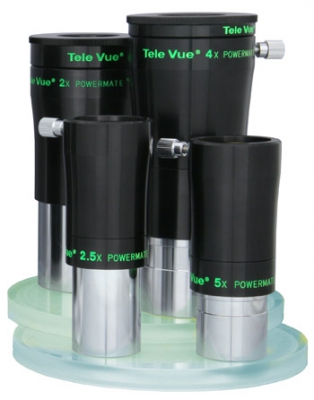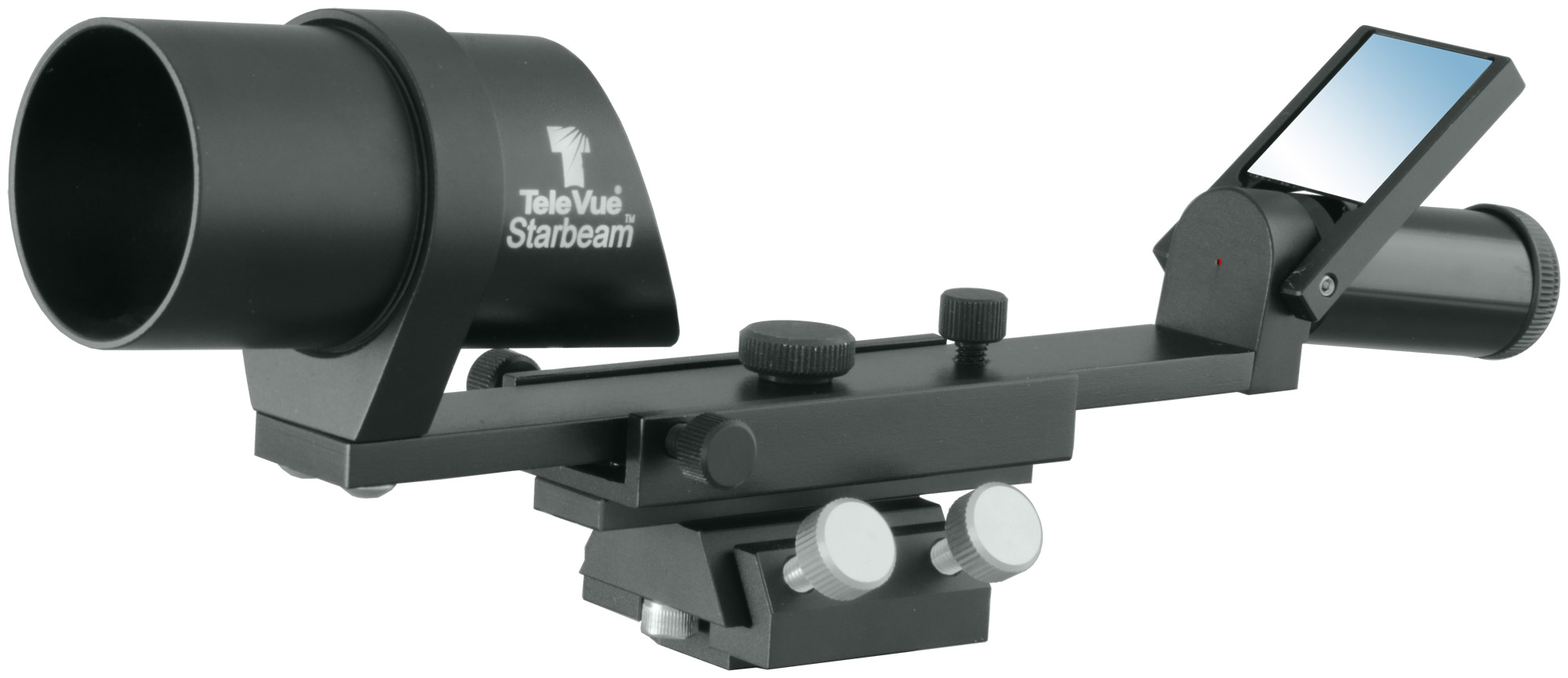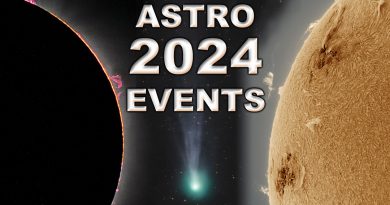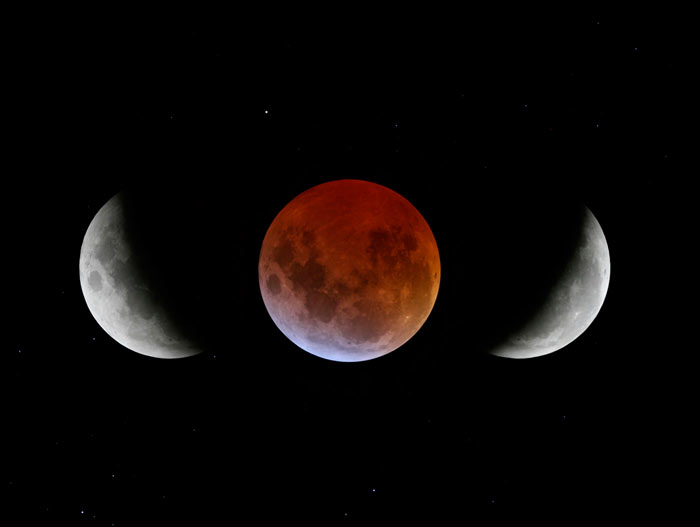Mars: Keep on Viewing & Imaging!
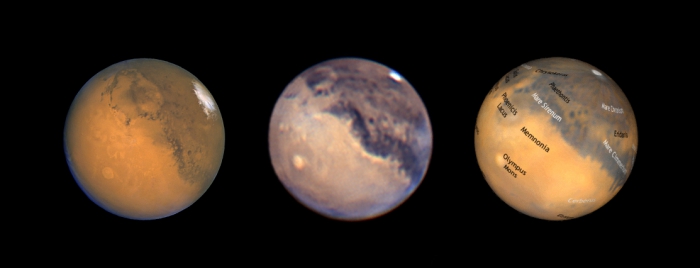
Even though we’re past the point of closest approach and opposition, Mars continues to loom large in the sky and is higher each night at the same time. In the northern hemisphere, the nights are coming sooner and lasting longer. Until mid-November, Mars will appear bigger than at any opposition until 2033!
You can use the excellent Mars Mapper 2020-2021 web app (mobile version) on the British Astronomical Association website to identify features on the planet when you observe or image it.
If you’d like to try your hand at imaging the planet, study the next sections carefully as they contain image processing tips from top Martian imagers on the Internet.
Russell Smith’s Mars Images
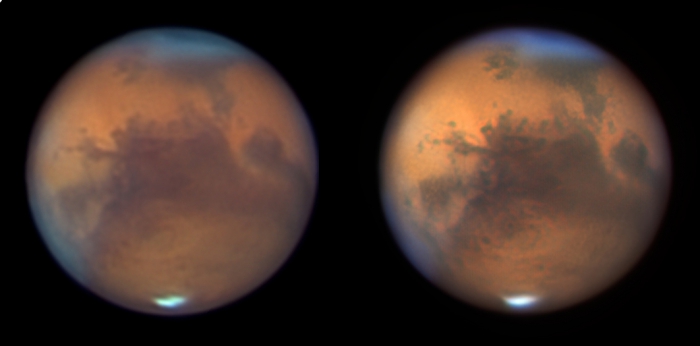
Russel Smith images from his backyard in Melbourne, Australia. He took the above photos when Mars was between closest approach and opposition. Features visible here include a small south polar cap (it is summer there) at bottom and Niliacus Lacus and Nilokeras reaching down from the north. Sinus Meridiani is on the right (Martian east) limb and a prominent Solis Lacus in the southern hemisphere is on the left. Bluish clouds are visible along some limbs. The central meridian on the face of the planet is at about 40° west longitude.
Clearly, the photos show differences in detail and contrast. Russel explains his approach to imaging the planet and the differences between the images.
With Mars, you find a lot of people striving to get surface detail, but in processing for this surface detail, they totally destroy any clouds in the atmosphere. Mars is the only body we can image which has both a visible solid surface and an atmosphere — so careful non-pushed processing with the blue channel is a bit of a must.
This one [right image] is a different capture to the other picture — so naturally has some differences in processing (I have a rough processing routine, not a rigid one). Initially, I had a lot of detail in the previous one but pulled it back for a smoother look, I wasn’t sure if I was introducing many artefacts or not — and rather I didn’t. This time I believe I was more careful though in taking my time (I do an iterative approach with wavelet sharpening in RegiStax – so have lots of very minor wavelet sharpened images).
Peter Sculthorpe Mars Images
On the opposite side of our planet from Russel is Peter Sculthorpe in Merseyside, England. The 10-hour time-zone difference between the two means they’ll often capture a different side of Mars on the same night.

The next set of images is a glimpse into Peter’s stacking and processing routine for Mars images. He uses Autostakkert 3.0 software to combine images and the wavelets feature of RegiStax software to increase contrast in the photos.
The initial stacked images are often quite blurred and unimpressive, and that you only get detail out of the data after applying wavelets in RegiStax, and then sharpening/tweaking a little further using the tools in a program such as Photoshop.
As you’ll see, the final striking image of the planet in the following sequence is the result of careful manipulation of data through various filters and processes.
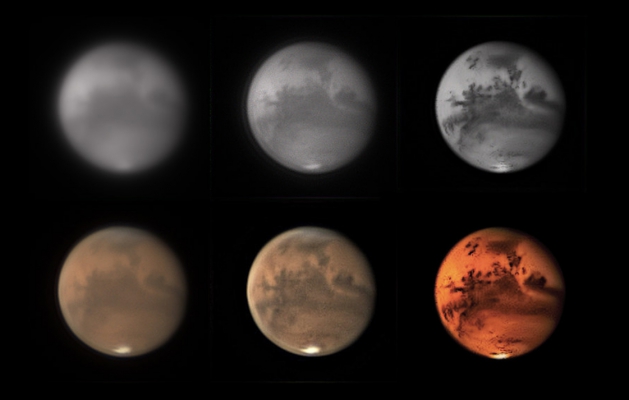
The top row displays stages of working with images made through a ZWO 850nm Infrared (IR) Pass filter. (The advantage of IR light is that it is less scattered by the atmosphere). From left to right the images are:
- The first is the IR images stacked in Autostakkert 3.0.
- The second is the stack with RegiStax wavelets applied to increase contrast in the image and make it appear “sharper”.
- The final photo is the result of Photoshop manipulation of the wavelets image. Because it is a black and white image that only shows values of brightness, we call this the “Luminance” (L) image.
The bottom row begins with a stack of images made through red, green, and blue (RGB) filters to produce a color image.
- The first is the RGB images stacked in Autostakkert 3.0.
- The second is the stack with RegiStax wavelets applied.
- The final photo is the result of combining the second image here with the final Luminance IR image to create a composite LRGB (or IR-RGB) image.
Keith Johnson Mars Image

The above image was also made using IR and RGB filters (compare to Peter Sculthorpe’s image above). It shows how the appearance of the planet is impacted by technique, processing, and image rotation.



